- Broschiertes Buch
- Merkliste
- Auf die Merkliste
- Bewerten Bewerten
- Teilen
- Produkt teilen
- Produkterinnerung
- Produkterinnerung
Practical ECG Interpretation draws on Dr. Stouffer sclinical experience to identify specific tracings and findings thatwill aid diagnosis of a wide variety of disorders, incluidngatrial spetal defect, mitral stenosis, pericarditis, andmore.
Andere Kunden interessierten sich auch für
![Psychiatry and Heart Disease Psychiatry and Heart Disease]() Michelle RibaPsychiatry and Heart Disease99,99 €
Michelle RibaPsychiatry and Heart Disease99,99 €![Critical Decisions in Emergency and Acute Care Electrocardiography Critical Decisions in Emergency and Acute Care Electrocardiography]() Critical Decisions in Emergency and Acute Care Electrocardiography127,99 €
Critical Decisions in Emergency and Acute Care Electrocardiography127,99 €![Urogenital Imaging Urogenital Imaging]() Urogenital Imaging170,99 €
Urogenital Imaging170,99 €![Guidelines and Gamuts in Musculoskeletal Ultrasound Guidelines and Gamuts in Musculoskeletal Ultrasound]() Rethy Chhem / Etienne Cardinal (Hgg.)Guidelines and Gamuts in Musculoskeletal Ultrasound271,99 €
Rethy Chhem / Etienne Cardinal (Hgg.)Guidelines and Gamuts in Musculoskeletal Ultrasound271,99 €![A Handbook of Mouse Models of Cardiovascular Disease [With CDROM] A Handbook of Mouse Models of Cardiovascular Disease [With CDROM]]() Qingbo XuA Handbook of Mouse Models of Cardiovascular Disease [With CDROM]249,99 €
Qingbo XuA Handbook of Mouse Models of Cardiovascular Disease [With CDROM]249,99 €![Advances in Combination Therapy for Asthma and COPD Advances in Combination Therapy for Asthma and COPD]() Advances in Combination Therapy for Asthma and COPD129,99 €
Advances in Combination Therapy for Asthma and COPD129,99 €![The Tumour Microenvironment The Tumour Microenvironment]() Novartis FoundationThe Tumour Microenvironment194,99 €
Novartis FoundationThe Tumour Microenvironment194,99 €-
-
-
Practical ECG Interpretation draws on Dr. Stouffer sclinical experience to identify specific tracings and findings thatwill aid diagnosis of a wide variety of disorders, incluidngatrial spetal defect, mitral stenosis, pericarditis, andmore.
Produktdetails
- Produktdetails
- Verlag: Wiley & Sons
- 1. Auflage
- Seitenzahl: 168
- Erscheinungstermin: 1. Mai 2009
- Englisch
- Abmessung: 250mm x 180mm x 10mm
- Gewicht: 408g
- ISBN-13: 9781405179287
- ISBN-10: 1405179287
- Artikelnr.: 25649903
- Herstellerkennzeichnung
- Libri GmbH
- Europaallee 1
- 36244 Bad Hersfeld
- gpsr@libri.de
- Verlag: Wiley & Sons
- 1. Auflage
- Seitenzahl: 168
- Erscheinungstermin: 1. Mai 2009
- Englisch
- Abmessung: 250mm x 180mm x 10mm
- Gewicht: 408g
- ISBN-13: 9781405179287
- ISBN-10: 1405179287
- Artikelnr.: 25649903
- Herstellerkennzeichnung
- Libri GmbH
- Europaallee 1
- 36244 Bad Hersfeld
- gpsr@libri.de
George Stouffer MD Vice Chief of Cardiology University of North Carolina USA
Introduction to ECG Interpretation.
Part I: The Basics of Electrocardiography - A Brief Introduction to the
Essentials.
1 Action Potentials.
2 Anatomy and Blood Supply of the Conduction System.
3 Normal Conduction and Complexes.
4 Electrodes and Leads.
Part II: Helpful Hints in Interpreting ECGs in Young Adults.
5 Normal Rhythm and Rate.
6 Determining Axis and Intervals.
7 Effects of Electrolyte Abnormalities on ECG.
8 ECG Clues to the Presence of Hemodynamically Significant Congenital or
Valvular Heart Disease in Young Adults.
9 ECG Clues to the Presence of an Increased Risk of Sudden Cardiac Death in
Young Adults.
Part III: Specific ECG Tracings and Diagnoses.
Section A: Conduction System Disease.
10 Atrial Flutter with 1:1 Conduction.
11 Atrioventricular Nodal Re-Entry Tachycardia.
12 Atrial Fibrillation.
13 Atrial Tachycardia.
14 Brugada Syndrome.
15 Complete Heart Block.
16 Long QT Syndrome.
17 Ventricular Tachycardia.
18 Wolff-Parkinson-White Syndrome.
Section B: Congenital Heart Disease, Pulmonary Hypertension and Valvular
Heart Disease.
19 Atrial Septal Defect - Secundum.
20 Atrial Septal Defect - Primum.
21 Dextrocardia.
22 Patent Ductus Arteriosus.
23 Tetralogy of Fallot.
24 Ventricular Septal Defect.
25 Mitral Stenosis.
26 Aortic Insufficiency.
27 Pulmonic Stenosis.
28 Pulmonary Hypertension.
Section C: Coronary Artery Disease, Pericarditis and Cardiomyopathies.
29 Dilated Cardiomyopathy.
30 Hypertrophic Cardiomyopathy.
31 Arrhythmogenic Right Ventricular Dysplasia.
32 Anterior Myocardial Infarction.
33 Inferior-Posterior Myocardial Infarction.
34 Diagnosis of Myocardial Infarction with Existing Bundle Branch Block.
35 Pericarditis.
Section D: Cardiovascular Manifestations of Systemic Diseases.
36 Muscular Dystrophy.
37 Intracerebral Bleed.
38 Pulmonary Embolus.
39 Hyperthyroidism.
Section E: Miscellaneous.
40 Hyperkalemia.
41 Early Repolarization.
42 P-Pulmonale.
43 Digoxin Toxicity.
44 Atrial Myxoma.
45 Hypothermia.
Index.
Part I: The Basics of Electrocardiography - A Brief Introduction to the
Essentials.
1 Action Potentials.
2 Anatomy and Blood Supply of the Conduction System.
3 Normal Conduction and Complexes.
4 Electrodes and Leads.
Part II: Helpful Hints in Interpreting ECGs in Young Adults.
5 Normal Rhythm and Rate.
6 Determining Axis and Intervals.
7 Effects of Electrolyte Abnormalities on ECG.
8 ECG Clues to the Presence of Hemodynamically Significant Congenital or
Valvular Heart Disease in Young Adults.
9 ECG Clues to the Presence of an Increased Risk of Sudden Cardiac Death in
Young Adults.
Part III: Specific ECG Tracings and Diagnoses.
Section A: Conduction System Disease.
10 Atrial Flutter with 1:1 Conduction.
11 Atrioventricular Nodal Re-Entry Tachycardia.
12 Atrial Fibrillation.
13 Atrial Tachycardia.
14 Brugada Syndrome.
15 Complete Heart Block.
16 Long QT Syndrome.
17 Ventricular Tachycardia.
18 Wolff-Parkinson-White Syndrome.
Section B: Congenital Heart Disease, Pulmonary Hypertension and Valvular
Heart Disease.
19 Atrial Septal Defect - Secundum.
20 Atrial Septal Defect - Primum.
21 Dextrocardia.
22 Patent Ductus Arteriosus.
23 Tetralogy of Fallot.
24 Ventricular Septal Defect.
25 Mitral Stenosis.
26 Aortic Insufficiency.
27 Pulmonic Stenosis.
28 Pulmonary Hypertension.
Section C: Coronary Artery Disease, Pericarditis and Cardiomyopathies.
29 Dilated Cardiomyopathy.
30 Hypertrophic Cardiomyopathy.
31 Arrhythmogenic Right Ventricular Dysplasia.
32 Anterior Myocardial Infarction.
33 Inferior-Posterior Myocardial Infarction.
34 Diagnosis of Myocardial Infarction with Existing Bundle Branch Block.
35 Pericarditis.
Section D: Cardiovascular Manifestations of Systemic Diseases.
36 Muscular Dystrophy.
37 Intracerebral Bleed.
38 Pulmonary Embolus.
39 Hyperthyroidism.
Section E: Miscellaneous.
40 Hyperkalemia.
41 Early Repolarization.
42 P-Pulmonale.
43 Digoxin Toxicity.
44 Atrial Myxoma.
45 Hypothermia.
Index.
Introduction to ECG Interpretation.
Part I: The Basics of Electrocardiography - A Brief Introduction to the
Essentials.
1 Action Potentials.
2 Anatomy and Blood Supply of the Conduction System.
3 Normal Conduction and Complexes.
4 Electrodes and Leads.
Part II: Helpful Hints in Interpreting ECGs in Young Adults.
5 Normal Rhythm and Rate.
6 Determining Axis and Intervals.
7 Effects of Electrolyte Abnormalities on ECG.
8 ECG Clues to the Presence of Hemodynamically Significant Congenital or
Valvular Heart Disease in Young Adults.
9 ECG Clues to the Presence of an Increased Risk of Sudden Cardiac Death in
Young Adults.
Part III: Specific ECG Tracings and Diagnoses.
Section A: Conduction System Disease.
10 Atrial Flutter with 1:1 Conduction.
11 Atrioventricular Nodal Re-Entry Tachycardia.
12 Atrial Fibrillation.
13 Atrial Tachycardia.
14 Brugada Syndrome.
15 Complete Heart Block.
16 Long QT Syndrome.
17 Ventricular Tachycardia.
18 Wolff-Parkinson-White Syndrome.
Section B: Congenital Heart Disease, Pulmonary Hypertension and Valvular
Heart Disease.
19 Atrial Septal Defect - Secundum.
20 Atrial Septal Defect - Primum.
21 Dextrocardia.
22 Patent Ductus Arteriosus.
23 Tetralogy of Fallot.
24 Ventricular Septal Defect.
25 Mitral Stenosis.
26 Aortic Insufficiency.
27 Pulmonic Stenosis.
28 Pulmonary Hypertension.
Section C: Coronary Artery Disease, Pericarditis and Cardiomyopathies.
29 Dilated Cardiomyopathy.
30 Hypertrophic Cardiomyopathy.
31 Arrhythmogenic Right Ventricular Dysplasia.
32 Anterior Myocardial Infarction.
33 Inferior-Posterior Myocardial Infarction.
34 Diagnosis of Myocardial Infarction with Existing Bundle Branch Block.
35 Pericarditis.
Section D: Cardiovascular Manifestations of Systemic Diseases.
36 Muscular Dystrophy.
37 Intracerebral Bleed.
38 Pulmonary Embolus.
39 Hyperthyroidism.
Section E: Miscellaneous.
40 Hyperkalemia.
41 Early Repolarization.
42 P-Pulmonale.
43 Digoxin Toxicity.
44 Atrial Myxoma.
45 Hypothermia.
Index.
Part I: The Basics of Electrocardiography - A Brief Introduction to the
Essentials.
1 Action Potentials.
2 Anatomy and Blood Supply of the Conduction System.
3 Normal Conduction and Complexes.
4 Electrodes and Leads.
Part II: Helpful Hints in Interpreting ECGs in Young Adults.
5 Normal Rhythm and Rate.
6 Determining Axis and Intervals.
7 Effects of Electrolyte Abnormalities on ECG.
8 ECG Clues to the Presence of Hemodynamically Significant Congenital or
Valvular Heart Disease in Young Adults.
9 ECG Clues to the Presence of an Increased Risk of Sudden Cardiac Death in
Young Adults.
Part III: Specific ECG Tracings and Diagnoses.
Section A: Conduction System Disease.
10 Atrial Flutter with 1:1 Conduction.
11 Atrioventricular Nodal Re-Entry Tachycardia.
12 Atrial Fibrillation.
13 Atrial Tachycardia.
14 Brugada Syndrome.
15 Complete Heart Block.
16 Long QT Syndrome.
17 Ventricular Tachycardia.
18 Wolff-Parkinson-White Syndrome.
Section B: Congenital Heart Disease, Pulmonary Hypertension and Valvular
Heart Disease.
19 Atrial Septal Defect - Secundum.
20 Atrial Septal Defect - Primum.
21 Dextrocardia.
22 Patent Ductus Arteriosus.
23 Tetralogy of Fallot.
24 Ventricular Septal Defect.
25 Mitral Stenosis.
26 Aortic Insufficiency.
27 Pulmonic Stenosis.
28 Pulmonary Hypertension.
Section C: Coronary Artery Disease, Pericarditis and Cardiomyopathies.
29 Dilated Cardiomyopathy.
30 Hypertrophic Cardiomyopathy.
31 Arrhythmogenic Right Ventricular Dysplasia.
32 Anterior Myocardial Infarction.
33 Inferior-Posterior Myocardial Infarction.
34 Diagnosis of Myocardial Infarction with Existing Bundle Branch Block.
35 Pericarditis.
Section D: Cardiovascular Manifestations of Systemic Diseases.
36 Muscular Dystrophy.
37 Intracerebral Bleed.
38 Pulmonary Embolus.
39 Hyperthyroidism.
Section E: Miscellaneous.
40 Hyperkalemia.
41 Early Repolarization.
42 P-Pulmonale.
43 Digoxin Toxicity.
44 Atrial Myxoma.
45 Hypothermia.
Index.

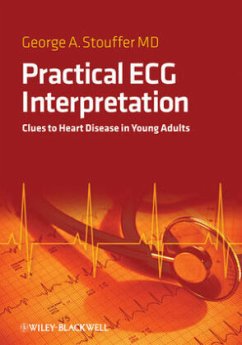
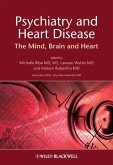
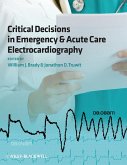
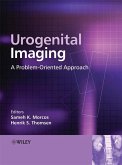
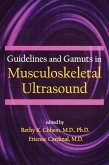
![A Handbook of Mouse Models of Cardiovascular Disease [With CDROM] A Handbook of Mouse Models of Cardiovascular Disease [With CDROM]](https://bilder.buecher.de/produkte/20/20835/20835122m.jpg)

